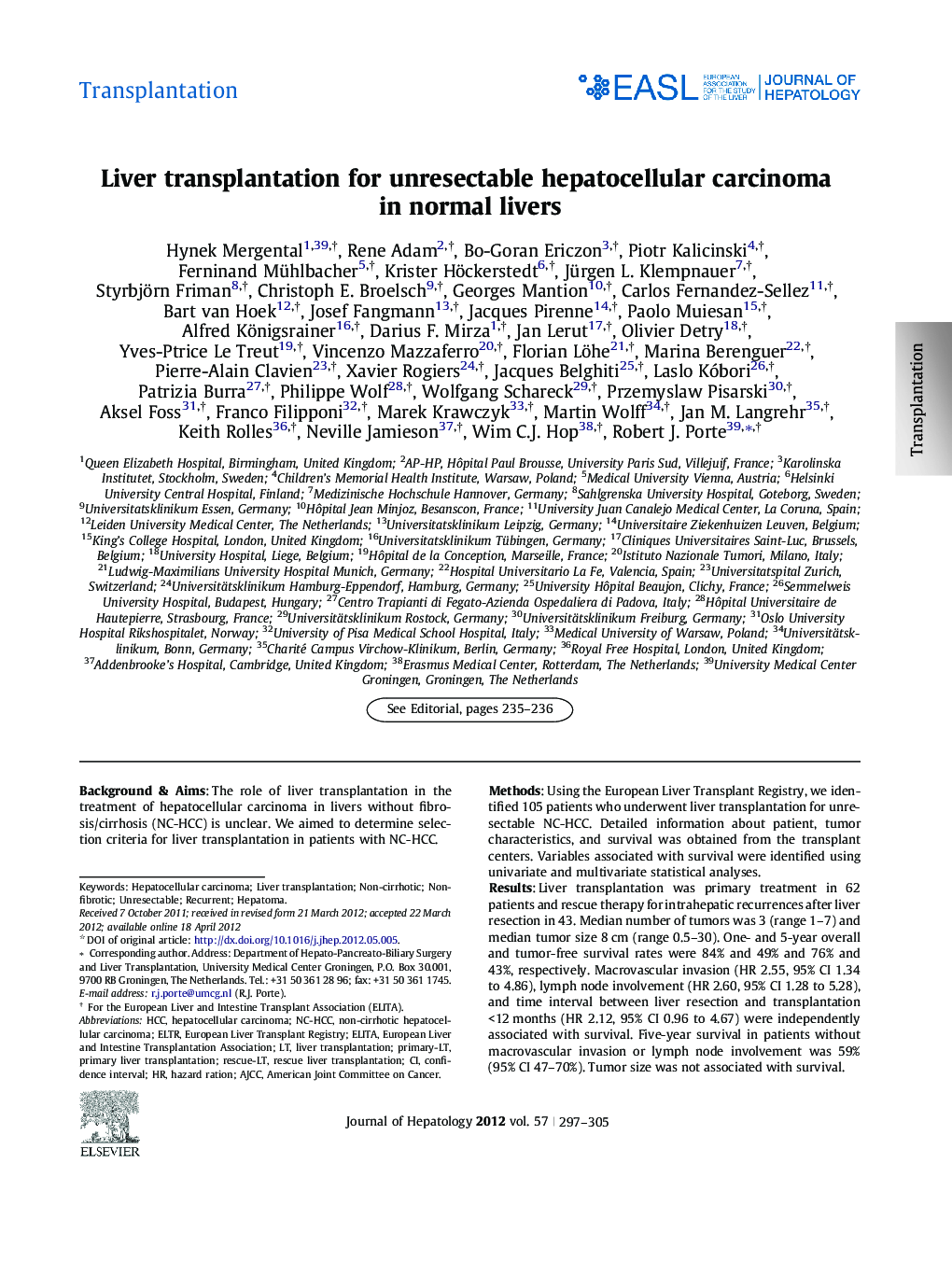| Article ID | Journal | Published Year | Pages | File Type |
|---|---|---|---|---|
| 6106632 | Journal of Hepatology | 2012 | 9 Pages |
Background & AimsThe role of liver transplantation in the treatment of hepatocellular carcinoma in livers without fibrosis/cirrhosis (NC-HCC) is unclear. We aimed to determine selection criteria for liver transplantation in patients with NC-HCC.MethodsUsing the European Liver Transplant Registry, we identified 105 patients who underwent liver transplantation for unresectable NC-HCC. Detailed information about patient, tumor characteristics, and survival was obtained from the transplant centers. Variables associated with survival were identified using univariate and multivariate statistical analyses.ResultsLiver transplantation was primary treatment in 62 patients and rescue therapy for intrahepatic recurrences after liver resection in 43. Median number of tumors was 3 (range 1-7) and median tumor size 8 cm (range 0.5-30). One- and 5-year overall and tumor-free survival rates were 84% and 49% and 76% and 43%, respectively. Macrovascular invasion (HR 2.55, 95% CI 1.34 to 4.86), lymph node involvement (HR 2.60, 95% CI 1.28 to 5.28), and time interval between liver resection and transplantation <12 months (HR 2.12, 95% CI 0.96 to 4.67) were independently associated with survival. Five-year survival in patients without macrovascular invasion or lymph node involvement was 59% (95% CI 47-70%). Tumor size was not associated with survival.ConclusionsThis is the largest reported series of patients transplanted for NC-HCC. Selection of patients without macrovascular invasion or lymph node involvement, or patients ⩾12 months after previous liver resection, can result in 5-year survival rates of 59%. In contrast to HCC in cirrhosis, tumor size is not a predictor of post-transplant survival in NC-HCC.
